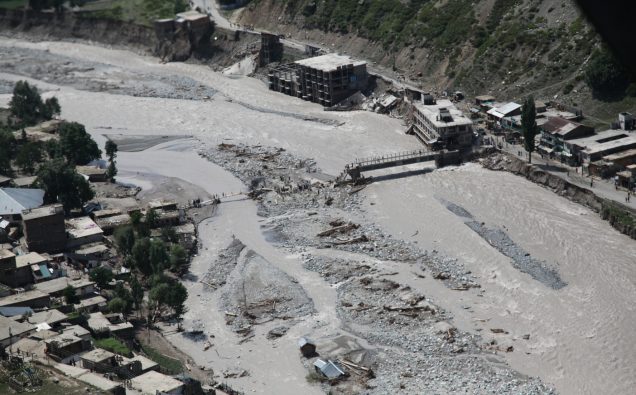
There is a growing evidence that climate change is taking the largest toll on poor and vulnerable people – due mainly to inequalities that persist as a result governmental failures.
The protection against climate hazards lies in transformative policies that governments could adopt to address the root causes of inequalities and build climate change resilience – a tall order in several developing countries.
The World Economic and Social Survey 2016: Climate Change Resilience—an Opportunity for Reducing Inequalities (#WESS2016), released Monday, clearly determines that much of the harm is not by accident but development gaps that leave large population groups at risk.
In the past 20 years, 4.2 billion people have been affected by weather-related disasters, including a significant loss of lives. Developing countries are the most affected by climate change impacts. Low-income countries suffered the greatest losses, including economic costs estimated at 5 per cent of GDP.
“Sadly, the people at greater risk from climate hazards are the poor, the vulnerable and the marginalized who, in many cases, have been excluded from socioeconomic progress,” United Nations Secretary-General Ban Ki-moon noted. “We have no time to waste—and a great deal to gain—when it comes to addressing the socioeconomic inequalities that deepen poverty and leave people behind.”
The report argues that while climate adaptation and resilience are overshadowed by mitigation in climate discussions, they are vital for addressing climate change and achieving the Sustainable Development Goals by 2030.
“Families living in poverty systematically occupy the least desirable land to damage from climate hazards, such as mud slides, periods of abnormally hot water, water contamination and flooding. Climate change has the potential to worsen their situation and thereby worsen pre-existent inequalities. The report shows that structural inequalities increase the exposure of vulnerable groups to climate hazards.”
Here are some of the details the report spotlights, according to United Natioins:
According to the latest data, 11 per cent of the world’s population lived in a low-elevation coastal zone in 2000. Many of them were poor and compelled to live in floodplains because they lacked the resources to live in safer areas. The data also underscores that in many countries in South and East Asia, Latin America and the Caribbean, many people have no other option than to erect their dwellings on precarious hill slopes.
The report also found a larger concentration of poor and marginalized groups in arid, semi-arid and dry sub-humid aridity zones which cover about 40 per cent of the Earth’s land surface. About 29 per cent of the World’s population live in those areas and are facing additional challenges owing to climate change.
Different forms of inequality, moreover, render some groups of people more vulnerable than others to damage from climate hazards. In Mumbai, India, for example, the houses of poorer families required repeated repairs to secure them against flood damage, and the cumulative cost of those repairs consumed a greater proportion of their income than for richer populations.
As a result of 2005 Hurricane Katrina, which hit New Orleans in the United States, the report found that multiple inequalities defined by income, race and education were major factors that increased the exposure and vulnerability of people, predominantly low-income African Americans, to hurricanes. It found that it was more difficult for the members of this specific population group to cope and recover during and after the hurricane.
According to the report, building resilience to climate change provides an opportunity to focus resources on reducing long entrenched inequalities that make people disproportionately vulnerable to climate hazards. The best climate adaptation policies, the report states, are good development policies that strengthen people’s capacity to cope with and adapt to climate hazards in the present and in the medium term.
Looking ahead, the report recommends the use of improved access to climate projections, modern information and communications technologies, and geographical information systems to strengthen national capacity to assess impacts of climate hazards and policy options statistically.
The report voices a concern that international resources to support climate change resilience are insufficient. At last year’s Paris climate conference, COP21, countries committed to setting a goal of at least US$ 100 billion per year for climate change mitigation and adaptation activities in developing countries. However, adaptation costs alone range from $70 billion to $100 billion per year by 2050 in the developing countries and these figures are likely to underestimate real costs.














